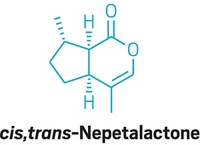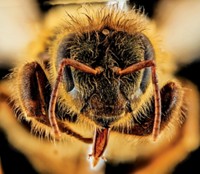Advertisement
Grab your lab coat. Let's get started
Welcome!
Welcome!
Create an account below to get 6 C&EN articles per month, receive newsletters and more - all free.
It seems this is your first time logging in online. Please enter the following information to continue.
As an ACS member you automatically get access to this site. All we need is few more details to create your reading experience.
Not you? Sign in with a different account.
Not you? Sign in with a different account.
ERROR 1
ERROR 1
ERROR 2
ERROR 2
ERROR 2
ERROR 2
ERROR 2
Password and Confirm password must match.
If you have an ACS member number, please enter it here so we can link this account to your membership. (optional)
ERROR 2
ACS values your privacy. By submitting your information, you are gaining access to C&EN and subscribing to our weekly newsletter. We use the information you provide to make your reading experience better, and we will never sell your data to third party members.
Education
Newscripts
Golf With FirePower, Goaty Perfume
by Alex Scott
April 13, 2014
| A version of this story appeared in
Volume 92, Issue 15
Want your golf game to be as hot as Tiger Woods’s? If you use a titanium alloy club for your next shot, you might get your wish—but not in a good way.

That’s because when golf clubs with titanium-coated heads strike a stone, they can generate sparks. And those sparks can exceed 3,000 °F and stay hot for long enough to ignite dry foliage and start a wildfire, according to a recent study by researchers at the University of California, Irvine.
Team leader and chemical engineer James C. Earthman investigated the phenomenon by re-creating golf course conditions in a lab and making observations with high-speed cameras and scanning electron microscopy. His team found that when a club head grazes a rock, titanium alloy particles break off and react violently with oxygen or nitrogen in the air to generate a tremendous amount of heat. The researchers also determined that no such problem exists with steel clubs (Fire Mater. 2014, DOI: 10.1002/fam.2235).
Orange County, Calif., fire investigators commissioned Earthman to undertake the study in the wake of recent blazes at Shady Canyon Golf Club, in Irvine, and Arroyo Trabuco Golf Club, in Mission Viejo. In both cases, golfers used 3-iron titanium alloy clubs that they say created sparks and subsequent fires.
The concern now is that such blazes could become more common as titanium alloy golf clubs, which are 40% lighter than their steel equivalents, become more popular. Orange County Fire Authority has asked golfers with titanium alloy clubs to keep their cool if they end up in the scrub. The duffers should ask fellow golfers whether it would be possible to improve the position of the ball or take a penalty shot rather than take a dangerous swing.
An entirely different kind of sparking caught the attention of some Japanese scientists. Researchers led by the University of Tokyo’s Yuji Mori have discovered a citrus-scented pheromone excreted by male goats that jump-starts female goats’ reproductive systems (Curr. Biol. 2014, DOI: 10.1016/j.cub.2014.01.073). The study is the first to show that a certain pheromone in mammals activates the central reproductive system of the opposite sex, according to the team.

Not only does 4-ethyloctanal rev up the female goats’ reproductive endocrine system, the researchers say, the chemical also oxidizes to become 4-ethyloctanoic acid, a key ingredient of the animal-like odor known for decades to attract female goats to males.Yukari Takeuchi, one of the researchers, opines that the male goat is pretty clever and marvels at his economical use of a single molecule to both put come-hither mojo on a she-goat and to start her reproductive engines.
But the findings are unlikely to trigger a surge of interest in pinpointing an equivalent human pheromone. Some studies have noted that humans respond to steroid hormones androstenes and estrenes, but there is no general consensus as to their effects or, indeed, whether they have any effect at all, says Tim Jacob, professor emeritus and olfactory expert at Cardiff University, in Wales. As he succinctly puts it, “Goats are not humans!”
Fragrance manufacturers won’t exactly be rushing to incorporate 4-ethyloctanal into their perfumes either. No matter how stylish the bottle, it won’t hide the goaty odor of the compound’s oxidized form.
Alex Scott wrote this week’s column. Please send comments and suggestions to newscripts@acs.org.





Join the conversation
Contact the reporter
Submit a Letter to the Editor for publication
Engage with us on Twitter